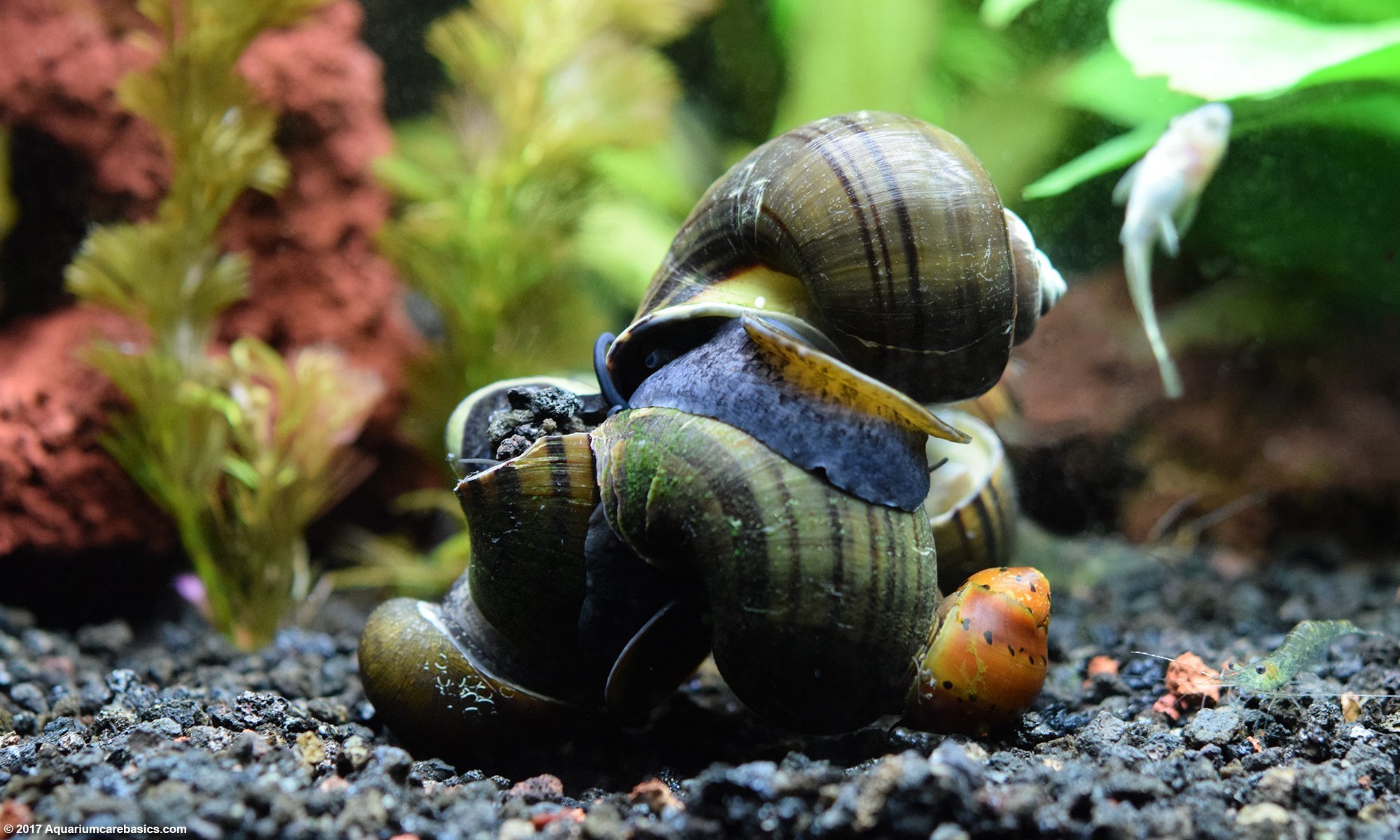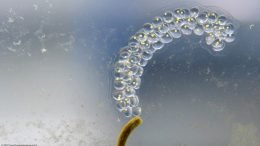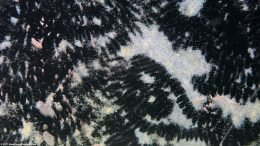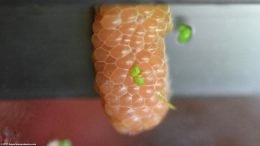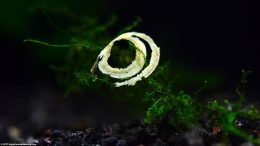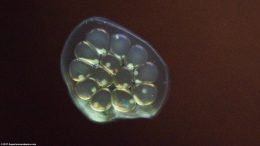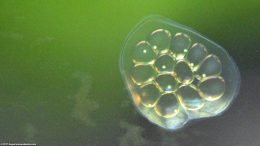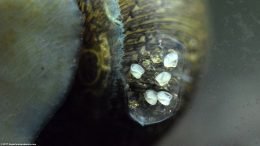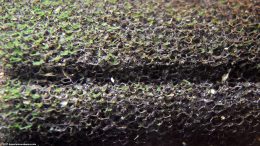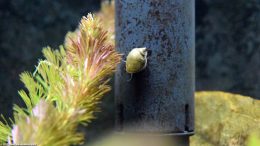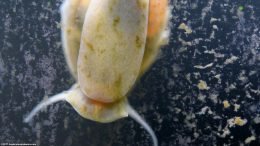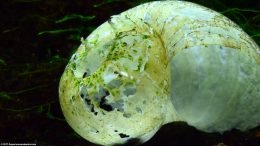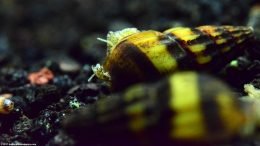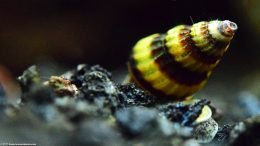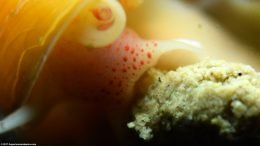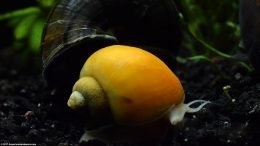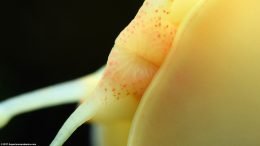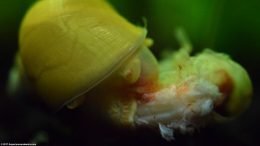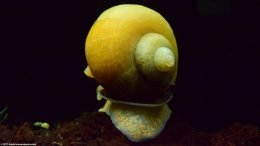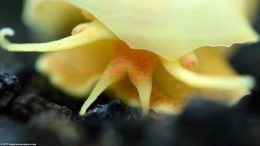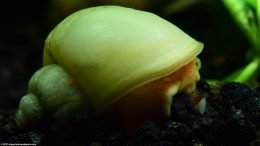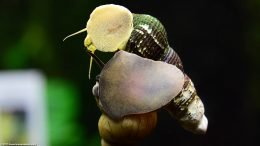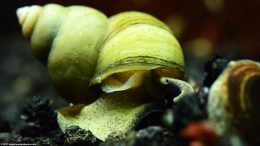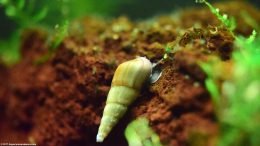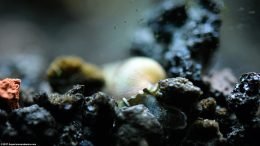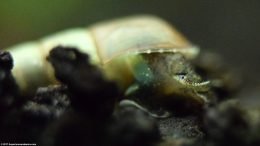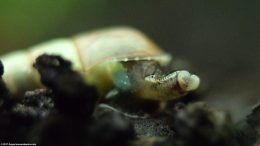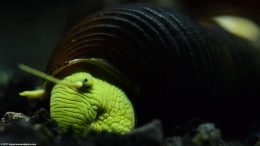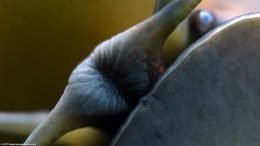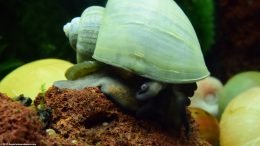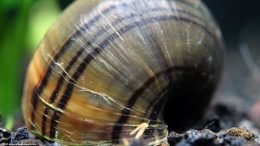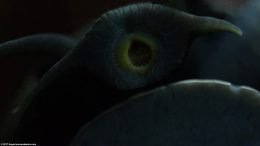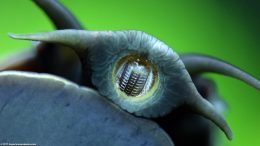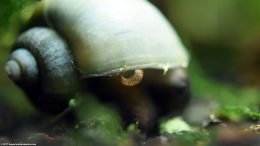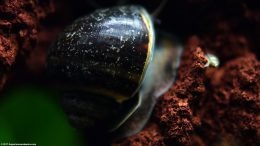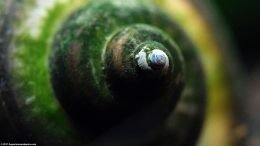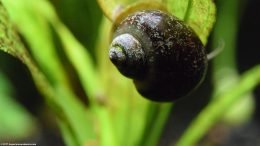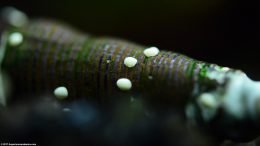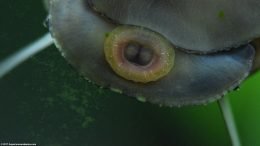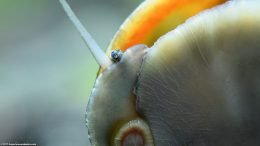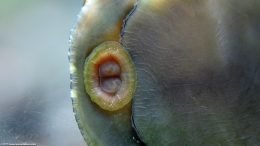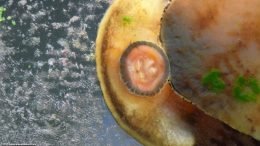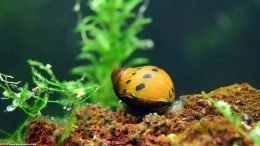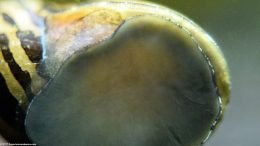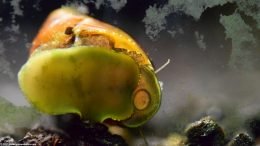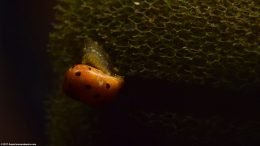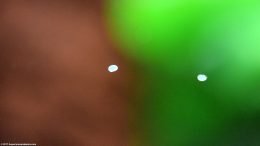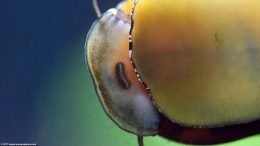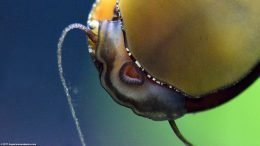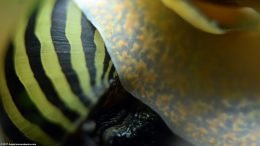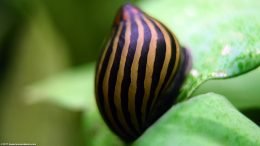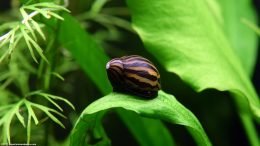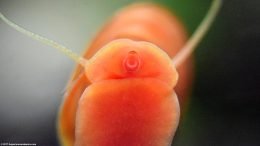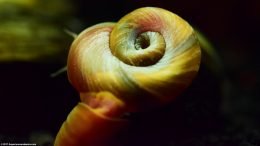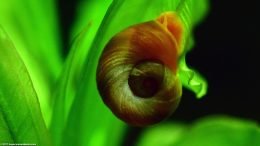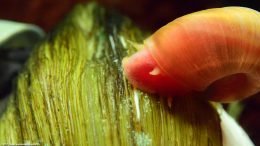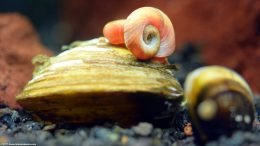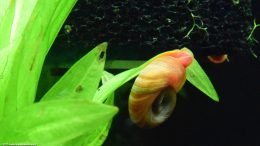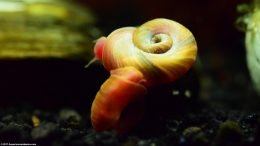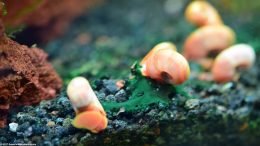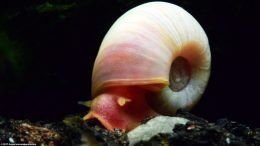Freshwater Snails can be fascinating inhabitants in an aquarium. Hobbyists often add freshwater snails as tank cleaners. The intent being they will be algae eaters and free the tank from uneaten food, dead plant matter and debris. But freshwater snails can be much more than that. Freshwater snails do interesting things in a tank and have many intriguing behaviors to observe.
In other cases, freshwater snails are introduced accidentally. If freshwater snails are on live aquarium plants or in the plastic bag of store display tank water when adding purchased fish, they make their way into the tank that way. In these cases, freshwater snails are often considered to be undesired pests. Freshwater snails that most often enter a tank inadvertently are common pond snails. Some of the reasons why hobbyists consider freshwater snails to be pests are related to egg laying, excessive reproduction and eating live plants.
When keeping freshwater snails, its important to avoid sudden abrupt shifts in water parameters. Its also important to make sure snails have a calcium rich diet. Calcium is necessary for growing and maintaining healthy shells.
Freshwater Snails In Action: 30 Second Video
Freshwater Snails Picture Gallery
Types Of Freshwater Snails Often Available
Assassin Snails: Hobbyists often keep Assassin Snails in their freshwater tanks to help keep populations of other snails in check. Assassin Snails prowl the tank looking for other snails like Malaysian Trumpet Snails, Pond Snails, and Ramshorn Snails to eat.
Gold Inca Snails: A popular type of freshwater snails in pet store display tanks are Gold Inca Snails. Gold Inca Snails can be good tank cleaners. Their bright yellow shells can add an accent color to a tank especially against green plants or a black background. Gold Inca Snails can be ferocious eaters. They are always on the prowl for a bite to eat and are very interested in soft algae buildup on hard surfaces. These freshwater snails also like supplements of bottom feeder tablets, pellets, fish flakes and algae wafers, as well as some types of blanched green vegetables. Some Gold Inca Snails may also be interested in eating live aquarium plants much to the chagrin of hobbyists.
Ivory Snails: With their creamy white colored shells, Ivory Snails are another type of freshwater snail that can work well in a community tank. Like Gold Inca Snails, Ivory Snails like to scavenge the tank for uneaten food, dead or decaying plant matter and soft algae on hard surfaces. Ivory Snails may also be interested in eating supplements of nearly any kind including fish flakes, algae wafers, tablets, pellets and even some blanched green and leafy vegetables.
Japanese Trapdoor Snail: An interesting freshwater snail available in stores these days is a Japanese Trapdoor Snail. Calm, peaceful and non-aggressive in temperament, a Japanese Trapdoor Snail can spend hours on end scouring the tank for uneaten food, debris and soft algae. Their operculum serves as the “trap door” that seals their shell aperture should danger suddenly arise.
Mystery Snails: One of the most readily available freshwater snails in pet stores are Mystery Snails. These freshwater snails have shells that are generally on the dark side, with light brown and dark brown accent colors and stripes. Other Mystery Snail shells can be ivory white. The color patterns of Mystery Snails shells are unique and nearly limitless. Mystery Snails can be great aquarium cleaners, feeding on a diet of uneaten food, and dead or decaying plant matter. Mystery Snails also like supplements of bottom feeder tablets, pellets, algae wafers and fish flakes. These freshwater snails are notorious escape artists, so it’s very important to keep tanks covered to the extent possible. If there is a way out of the tank, the odds are Mystery Snails will eventually find it.
Nerite Snails: One of the most popular freshwater snails kept by hobbyists are Nerite Snails. Available in several varieties with different shell shapes, colors, textures and patters, Nerite Snails are one of the best algae eating snails around. Nerite Snails spend a lot of time methodically travelling across aquarium glass and other hard surfaces searching for soft algae buildup that they eat in small bites. Some Nerite Snails also dig about an inch or so below the surface of the substrate to feast on algae buildup there as well. Nerite Snails are also popular because they do not reproduce in freshwater aquariums and overrun a tank like some other freshwater snails do. Nerite Snails do create a bit of a mess at times however, as they lay little hard white eggs on hard surfaces.
Pond Snails: More often than not, pond snails are the type of freshwater snails that end up in tanks by accident. Pond snails can make their way into tanks by being attached to live plants purchased from the store. Sometimes, they are even in the display tank water used to transport fish in the plastic bag from the store. Other times, live plants can have small pond snail eggs on them. Whether pond snails are considered to be pet or pest depends on each hobbyist.
Rabbit Snails: One of the more interesting freshwater snails is the Rabbit Snail. A Rabbit Snail is a peaceful, non-aggressive slow moving tank mate that can help keep tanks free of otherwise uneaten food and debris. Rabbit Snails have very intriguing look, and they can reproduce in fresh water.
Ramshorn Snails: For some hobbyists, these freshwater snails can be purchased for for sale in stores. They can be fun to raise. For others, Ramshorn Snails, like pond snails, can accidentally make their way into tanks and be considered fast reproducing pests. Ramshorn Snails can be good tank cleaners interested in soft algae buildup on hard surfaces, as well as uneaten food, dead or decaying plant matter and food supplements. Ramshorn Snails lay eggs, reproduce in freshwater, and can quickly overrun a tank. Whether Ramshorn Snails are considered to be pet or pest depends on each hobbyist and the type of tank kept.
Trumpet Snails: Another group of freshwater snails that can either be introduced as a welcomed inhabitant or be dreaded as an unwelcome guest are Trumpet Snails. With their cone shaped shells, Trumpet Snails can spend hours on end eating soft edible algae buildup from hard surfaces. Tank glass and aquarium filter intakes are good examples. Trumpet Snails are also good diggers. They make their way deep into gravel or substrate to search for edible matter under the surface.

